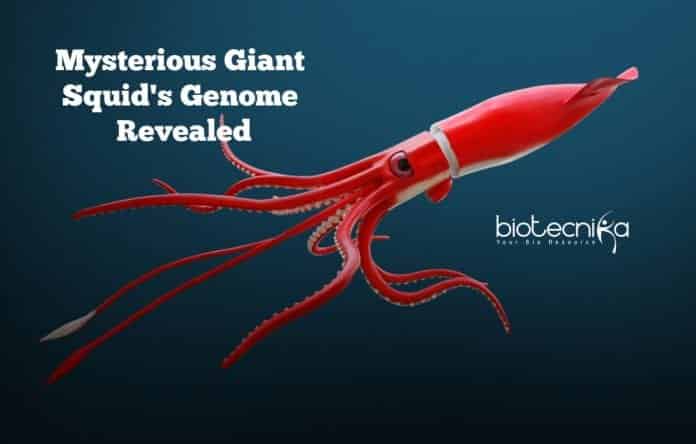Mysterious Giant Squid’s Genome Revealed!
A team of scientists from the University of Copenhagen including scientist Caroline Albertin of the Marine Biological Laboratory (MBL), Woods Hole revealed the full genome sequence of the mysterious giant squid (Architeuthis dux) through which important clues about the anatomy and evolution of the giant squid can be obtained.
The giant squids have never been caught and kept alive as they are rarely sighted and their biology (even how they reproduce) is still largely a mystery. Insights on this and much more about the giant squid can be understood from its genome sequence.
Albertin, who in 2015 led the team that sequenced the first genome of a cephalopod (the group that includes squid, octopus, cuttlefish, and nautilus) said, “We found that the giant squid looks a lot like other animals in terms of their genes meaning we can study these truly bizarre animals to learn more.”
At the University of Copenhagen, the research team led by Rute da Fonseca discovered that the genome of the giant squid is big, about 90 percent of the human genome with an estimation of 2.7 billion DNA base pairs.
Various well-known, ancient gene families in the giant squid were analyzed by
Albertin, drawing comparisons with the human genome and with the four other cephalopod species that have been sequenced.The giant squid was found to have only single copies of the important developmental genes found in almost all animals (Hox and Wnt). That means the strategy that evolution took long ago to increase the size of vertebrates through whole-genome duplication, was not used by this gigantic, invertebrate long a source of sea-monster lore to get so big.
Further probing of its genome could give us answers as to how this squid species got so giant.
Albertin said, “To answer a lot of questions about the biology of these very weird animals, such as how they acquired the largest brain among the invertebrates, their incredible skill at instantaneous camouflage and their sophisticated behaviors and agility, a genome is the first step in knowing all the answers.”
Albertin says, ” Cephalopods are thought to have evolved independently of the vertebrates while they have many complex and elaborate features. When their genomes are compared, we can ask “Are cephalopods and vertebrates built differently or are they built the same way?'”
In the giant squid genome, the genes that are typically not found in abundance in invertebrates, i.e., more than 100 genes in the protocadherin family were identified.
She says, “In wiring up a complicated brain correctly, protocadherins are thought to be important. It was really surprising to find more than 100 of them in the octopus genome back in 2015 as they were thought of as vertebrate innovation. In the giant squid as well, a similar expansion of protocadherins was found.”
Lastly, a gene family called reflectins that (so far) is unique to cephalopods was analyzed. Albertin says “In the process of making iridescence, reflectins encode a protein that is involved in this process. We are trying to understand how this gene family works and what exactly is this gene family’s function as color is an important part of a camouflage.”
“To understand what makes a cephalopod a cephalopod, having this giant squid genome is an important node. Also, it helps us understand how novel and new genes arise in evolution and development.”
Find More Information Here: DOI: 10.1093/gigascience/giz152






























